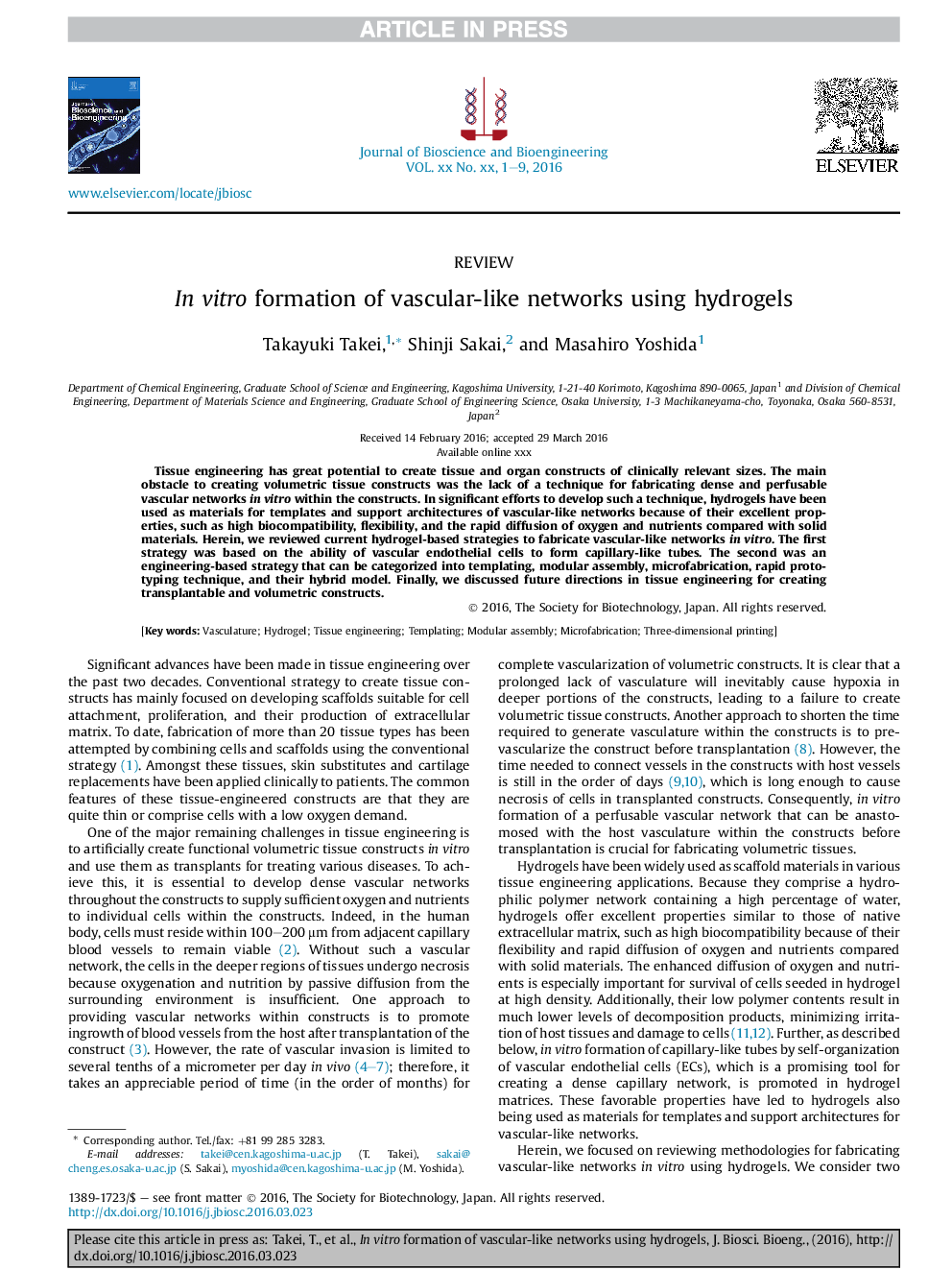| Article ID | Journal | Published Year | Pages | File Type |
|---|---|---|---|---|
| 4753258 | Journal of Bioscience and Bioengineering | 2016 | 9 Pages |
Abstract
Tissue engineering has great potential to create tissue and organ constructs of clinically relevant sizes. The main obstacle to creating volumetric tissue constructs was the lack of a technique for fabricating dense and perfusable vascular networks in vitro within the constructs. In significant efforts to develop such a technique, hydrogels have been used as materials for templates and support architectures of vascular-like networks because of their excellent properties, such as high biocompatibility, flexibility, and the rapid diffusion of oxygen and nutrients compared with solid materials. Herein, we reviewed current hydrogel-based strategies to fabricate vascular-like networks in vitro. The first strategy was based on the ability of vascular endothelial cells to form capillary-like tubes. The second was an engineering-based strategy that can be categorized into templating, modular assembly, microfabrication, rapid prototyping technique, and their hybrid model. Finally, we discussed future directions in tissue engineering for creating transplantable and volumetric constructs.
Keywords
Related Topics
Physical Sciences and Engineering
Chemical Engineering
Bioengineering
Authors
Takayuki Takei, Shinji Sakai, Masahiro Yoshida,
